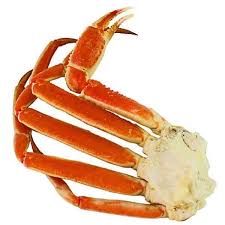Snow crab clusters are a popular seafood delicacy known for their sweet and tender meat. Found primarily in the cold waters of the North Atlantic and North Pacific oceans, snow crabs are harvested for their flavorful legs and claws, which are typically sold in clusters. This guide will explore the key aspects of snow crab clusters, including their biology, harvesting methods, nutritional value, culinary uses, and sustainability considerations.
1. Biology of Snow Crabs

Biology of Snow Crabs
Snow crabs (Chionoecetes opilio) are crustaceans belonging to the family Oregoniidae. They are characterized by:
- Size: Males are typically larger, with carapaces ranging from 7 to 15 centimeters.
- Color: A mix of reddish-brown and white on their shells.
- Habitat: Snow crabs are benthic creatures, living on the ocean floor at depths of 20 to 1,200 meters.
- Lifespan: Snow crabs can live up to 20 years.
2. Harvesting Methods

Snow crab fishing is a major industry in regions like Alaska, Canada, and Russia. The crabs are harvested using:
- Pots and Traps: Specially designed traps minimize bycatch and protect young crabs.
- Seasons: Harvesting seasons are strictly regulated to ensure population sustainability.
3. Nutritional Value

Nutritional Value of Snow Crab Clusters
Snow crab clusters are not only delicious but also highly nutritious. A 100-gram serving provides:
- Calories: Approximately 90
- Protein: 18 grams
- Fat: Less than 1 gram
- Vitamins and Minerals: High in vitamin B12, selenium, and zinc.
4. Culinary Uses

Culinary Uses of Snow Crab Clusters
Snow crab clusters are versatile and can be prepared in various ways:
- Steamed or Boiled: The most common methods to preserve their natural flavor.
- Grilled: Adds a smoky taste to the meat.
- Recipes: Popular in soups, salads, pastas, and as standalone dishes with melted butter or lemon.
5. Sustainability Considerations

Sustainability Considerations of snow crab
Efforts to maintain snow crab populations include:
- Fishing Regulations: Strict quotas and size limits to prevent overharvesting.
- Marine Stewardship Council (MSC) Certification: Many fisheries adhere to sustainable practices.
- Climate Change: Monitoring environmental changes that impact crab habitats.
Conclusion
Snow crab clusters are a delectable and nutritious seafood option. Their sustainable harvesting ensures that future generations can enjoy this marine treasure. Whether you’re a seafood enthusiast or a curious beginner, snow crab clusters offer a culinary experience that’s hard to beat.

